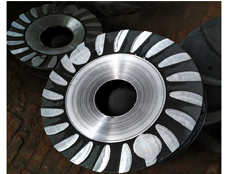+86 311 85258258
+86 311 85258258
Jun. 03, 2021
What Is Metal Casting?
The definition of metal casting is to pour molten metal into a mold containing a hollow cavity of ideal geometry and allow it to cool down to form a solidified part. The term "casting" is also used to describe parts made by the casting process, which can be traced back to 6000 years ago. Historically, it has been used to manufacture complex and/or large parts, which would be difficult or expensive to use other manufacturing processes.
Casting mainly produces ingots and shapes. An ingot is a simple shape casting used for further processing, such as metal extrusion, forging, etc. Shape casting is the production of complex geometric shapes closer to the final part for near or net shape casting.
How does metal casting work?
Steps of metal casting
Moulding-making a copy of the part to be cast from suitable materials such as wood, metal, plastic, or plaster.
Mold manufacturing-Mold manufacturing is a multi-step process in which the pattern and core are used to create a mold. The type and production method of the mold depends on the type of metal casting. For example, sand casting uses sand in a flask to make molds, while die casting uses hardened tool steel molds.
Metal melting and pouring-liquid melting and pouring into the mold cavity or gravity or high pressure. Then, before the casting is removed from the mold, the casting is allowed to solidify. Likewise, the removal of cast parts will vary depending on the type of metal casting.
Post-processing-In this last step, the cast metal object is removed from the mold and then processed. During the refurbishment process, any modeling material of the object should be removed, and rough edges should be removed.
Advantages of metal casting
Metal casting can produce complex shapes
The characteristics of the internal cavity or hollow part can be easily realized
Large parts can be produced in a one-piece casting
Use other manufacturing processes to manufacture difficult or expensive materials that can be cast
Compared with other manufacturing processes, casting is cheaper for medium and large batches
Almost all metals can be cast
The near-net-shape often has no or little post-processing
Therefore, metal casting is one of the important mesh manufacturing technologies. Others include net shape forging, sheet metal stamping, additive manufacturing, and metal injection molding.
Disadvantages of metal casting
Relatively rough surface finish and therefore larger tolerances must be allowed, not suitable for mating interfaces
Metal casting, such as shell casting, has restrictions on size and style
Although additive manufacturing processes (such as binder injection) have recently been used to make molds, patterns are time-consuming and expensive
Due to the high mold cost, it can be very expensive for small to medium quantities of die casting
The choice of part size and material depends on the choice of the casting process. For example, only non-ferrous metals can be used for permanent castings
We are a metal casting supplier. Please feel free to contact us if you are interested in our products.

PREVIOUS: Impeller Vs Propeller
NEXT: Do You Know Impeller?